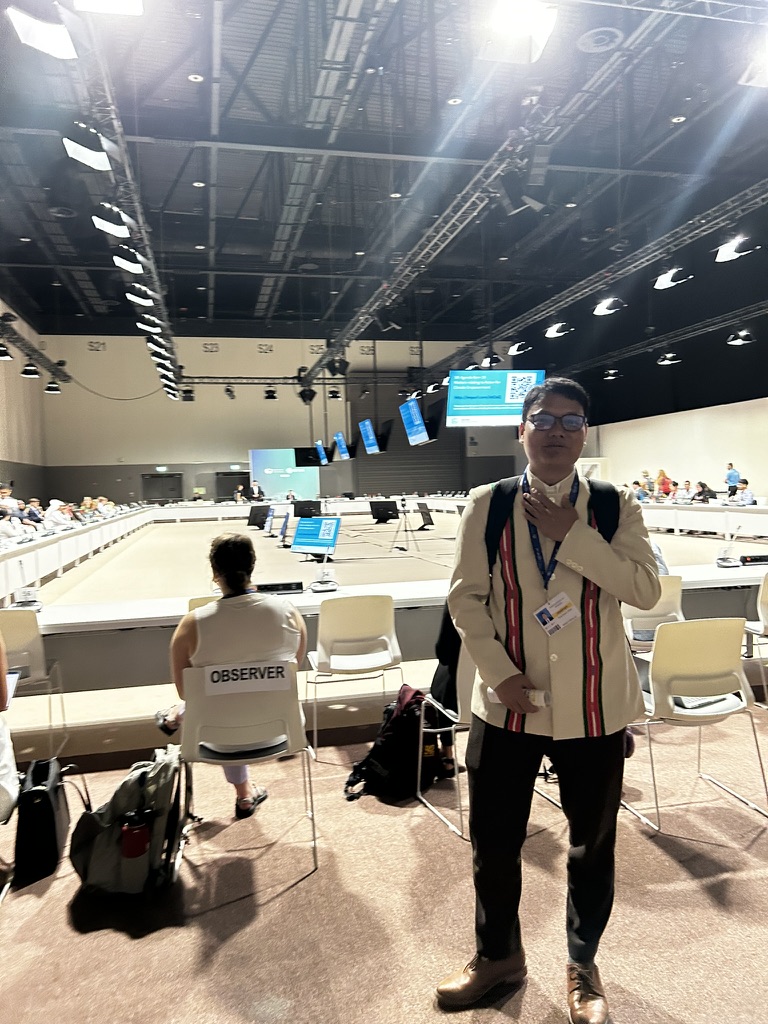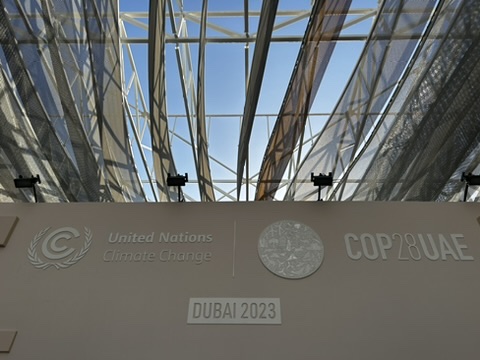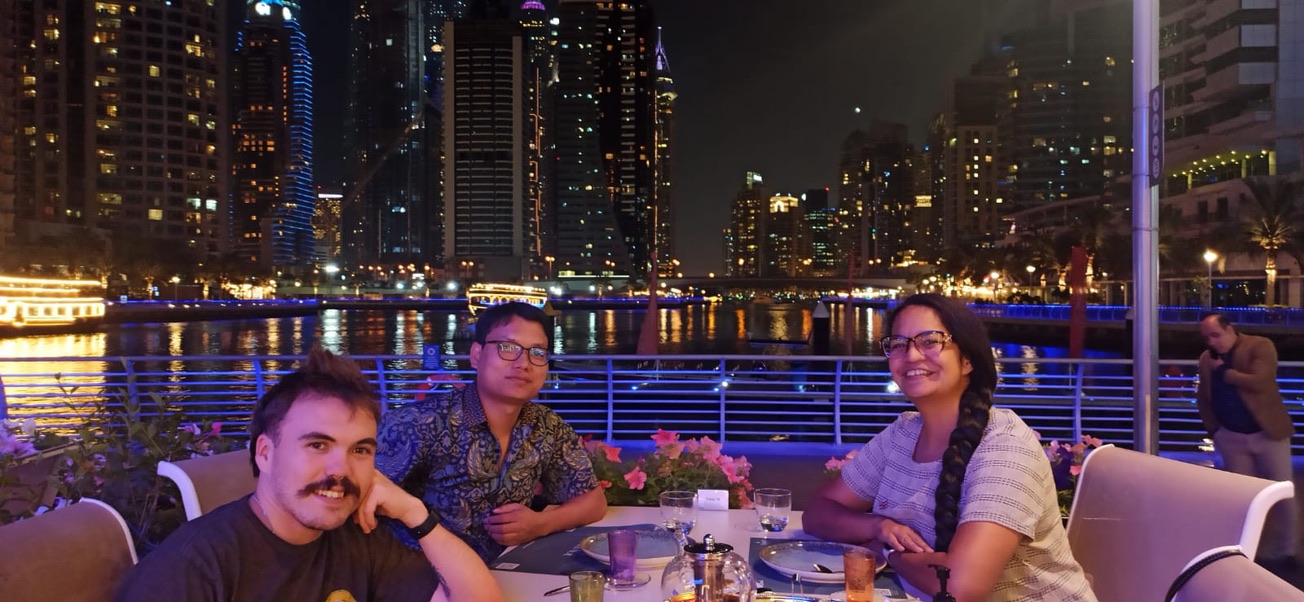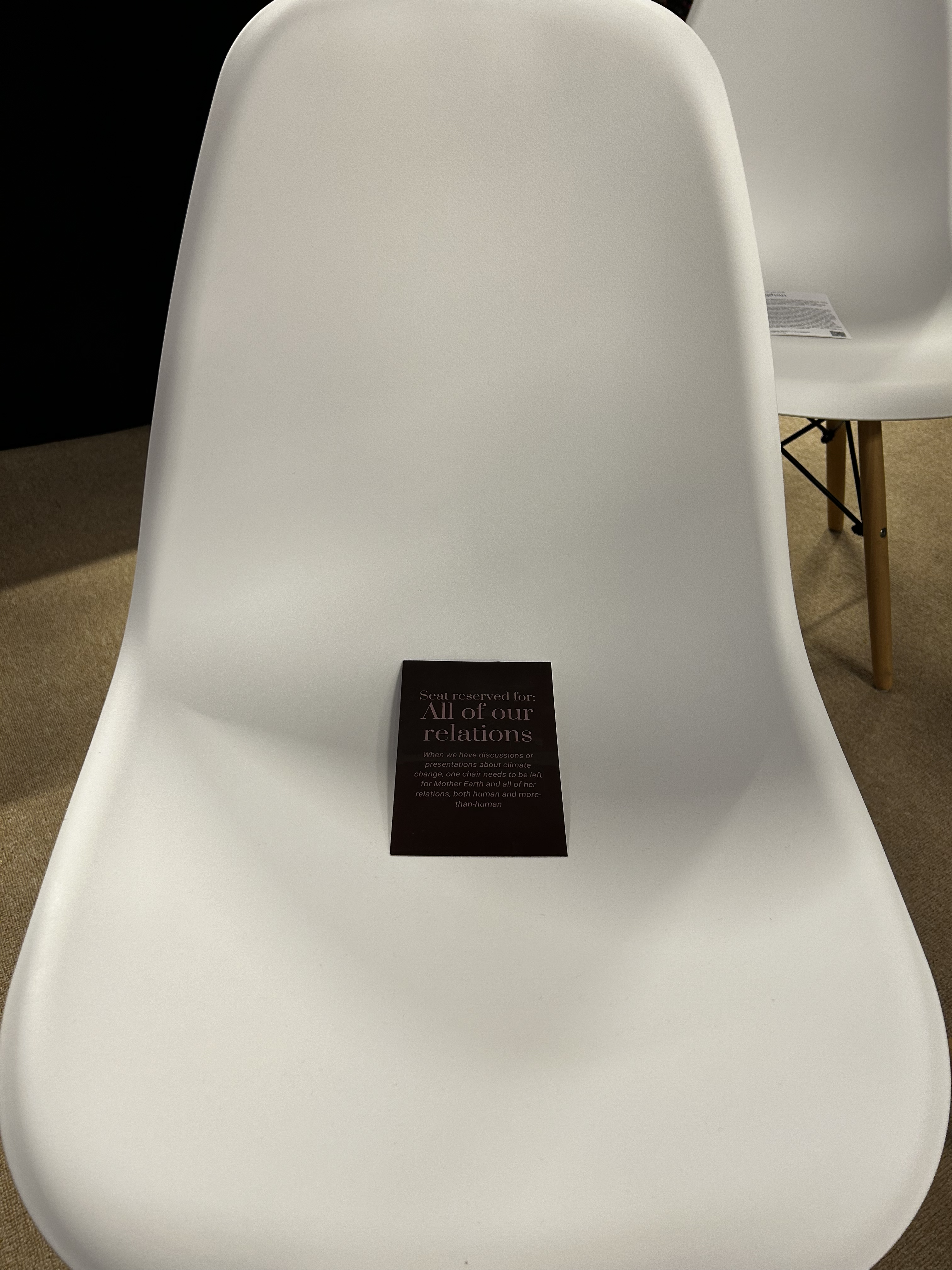By: Jacob Stewart, Community Director (with contributions from Tual Sawn Khai and Katie Kamelamela)
Jacob Stewart, Mountain Sentinels Community Director, and Mountain Sentinels Fellows Tual Sawn Khai and Katie Kamelamela represented Mountain Sentinels at the 28th conference of Parties of the UNFCCC (COP) from November 30th to December 12th, 2023 in Dubai, United Arab Emirates. Our team engaged with others, learned about and from the myriad events, and held events to elevate the mountain agenda to the forefront of climate policy.
Much discussion centred around the new “Loss and Damage fund” which is dedicated to financially supporting nations and communities enduring the ongoing impacts of climate change and reconciling the unavoidable consequences. There is hope that this financial mechanism will extend to the mountain communities at the frontline of climate change. While this may have been a victory for some, seen as a “first step in the right direction,” only time will tell of the true successes.
Another astonishing overall reflection of COP28 was the presence of oil and gas executives parading the walkways. Promises of carbon sequestrated infrastructure or carbon offsetting schemes often felt disillusioned from the harsh realities of the many civil society organisations (CSOs) embodying the impacts of climate change induced by these executives.
Mountains played no small part in many facets of COP28. In fact, on day one of the conference, mountains received attention as highly vulnerable and susceptible spaces to climate change by Parties from Andorra and Bhutan. Their call to action was the need for explicit dialogue and mention of mountains in the documentation of COP28. This led to a formal, mandated session, the 16th gathering of the Focal Point Forum of the Nairobi Work Programme.
COP28 For the Mountains – Nairobi Work Programme
The Nairobi Work Programme “serves as a platform for sharing knowledge, experiences, and best practices related to adaptation efforts among countries and stakeholders” focusing on “understanding and closing adaptation knowledge gaps in mountains, high-latitude areas, and the cryosphere.”

Tual Sawn Khai representing Mountain Sentinels at the 16th Focal Point Forum of the Nairobi Work Programme.
Mountain Sentinels was invited to participate in the discussion and contribute to the mandated event. Jacob Stewart and Tual Sawn Khai joined the mix of party members, NGO leaders, and United Nations delegates for a discussion about the current state of the mountains.
Participants broke into two small working groups to discuss issues relative to either glaciers or high-altitude/mountain regions to exchange knowledge and identify gaps. Jacob and Khai joined the mountains and high-altitude region working group which explored the shared experience of exacerbated natural disasters, economic threats, and overall safety induced by climate change. Jacob shared that there is a greater need for understanding the current financial commitments to the sustainable development of mountain communities and regions, which other country representatives echoed.
As the two groups reconnected, there were many points of synthesis. including a “bridging of western scientific and Indigenous communities,” international and multilateral partnerships, and even a call for exploration of an intersectional nexus of mountains and oceans. The room had a sense of hope and an unspoken connection that we are stronger as a group than as individual countries, organizations, and people.
Mountain Sentinels Delegation
Each of the Mountain Sentinels delegates brought their own interests, expectations, and expertise to COP28 as well as represented their individual communities.
Tual Sawn Khai, as a person from the Chin State of Myanmar and a public health academic, embraced the entirety of COP28 as a space for learning. His engagement at the Nairobi Work Programme and at the Early Career Ringo Round-Up was invaluable, particularly with the introduction of the COP Health Day. He reflected on this newly introduced Health Day, noting: “During the 2015 floods in Myanmar, I engaged in emergency evacuation and rehabilitation efforts for a year in Chin State. During this time, I observed the intersection of climate change and health, as many individuals residing in temporary shelters fell ill due to the lack of preventive measures and insufficient health responses. While attending my first COP, in Dubai, as an observer, I felt a sense of satisfaction when COP Health Day and Declaration on Climate and Health was launched for the first time in history. The declaration outlined a series of commitments to strengthen health systems’ resilience and to address the growing burden of climate-related diseases. However, I wonder how effective this declaration will be in countries like Myanmar, plagued by political strife and climate change, where 2.6 million people are still displaced and climate change is not a top priority for authorities and policymakers.”
Katie Kamelamela, as a Native Hawai’ian and ethnobotanist, embraced the multifaceted presence of ‘Faith’ and indigeneity at COP. Much of her time was spent at the newly opened ‘InterFaith Pavilion’ which brought together people of faith from all walks of life. She reflected that for her community, people have no land without faith. The emphasis is that landownership, tenure, and stewardship are inexplicably linked the societal expressions of faith. Below is a compilation from her Instagram page featuring soundscapes of her time at COP28; be sure to check out her page for other materials about COP and her work as an ethnobotanist.
Jacob, as a rural, public finance researcher, spent the days engaging in the semantics of the negotiations while engaging with network partners, both old and new, to understand the perceptions of the loss and damage fund. From his perspective, the loss and damage fund felt like a rushed spectacle to announce in the early days of the conference without much follow-through or financial backing from the global north’s largest emitters. How will this fund operationalize on the ground compared to the likes of similar funds such as the Green Climate Fund and the Adaptation Fund?
Partners of the Mountains
Mountain events filled the corners of the conference promoting the inclusion of a wide variety of diverse stakeholders from around the world. Not only did Mountain Sentinels partner organizations host a full agenda of events across the 12 days, but Mountain Sentinels Alliance members were represented throughout various events in-person and remotely.
In the larger pavilion spaces, mountains echoed through many of the showcases. For example, the Cryosphere Pavilion hosted a full schedule of events, discussions, and speakers positioning high-altitude regions and glaciers at the front of the conversation. Similarly, ICIMOD collaboratively
hosted panels such as “Catalysing investment for the mountain people and nature in the Hindu Kush Himalaya Region” which engaged partners from the Asian Development Bank, Mountain Research Initiative and ICIMOD.
Even though some of the members of the Mountain Sentinels Alliance were unable to attend events in person, their stories were placed center stage at some events. Alliance members Tiffany Pyette and Elder Gùdia Mary Jane Johnson (Canadian Mountain Network) contributed their art, stories and knowledge to the Exploring the Gendered Impacts of Climate Change: An Art Exhibition event hosted at the Monash Pavilion. Gùdia introduced the “Chair for the Mountains” as this space and one chair was given a red story card which asked participants to find another seat and respect this as a representation of the “mountains and all of our relations.”
Thoughts and Reflections
At times, COP28 felt disconnected and disjointed from the realities and experiences of those most impacted, on the ground. Physically the space was sprawled and each space felt isolated in its own bubble. Climate change must be tackled together, that much is clear. And if the world’s strongest leaders, most passionate practitioners and engaged researchers cannot converge on solutions, it can feel rather disheartening.
Other times, however, it felt alive and sprawling with passionate youth and powerful grassroots organizations. Corners of pavilions provided a space for people to converge and ideas for tackling the world’s largest crisis suddenly felt tangible. For the mountain agenda, these spaces, the vitality of the youth, and the power of grassroots organizations were pivotal in developing a path forward.




